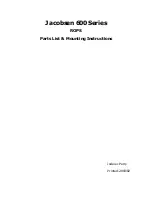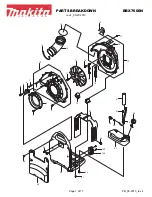
3-10
Changing the Mode of Operation
APCI operation
The atmospheric pressure chemical ionization (APCI) mode produces singly
charged protonated or deprotonated molecules for a large range of nonvolatile
analytes. In APCI mode, the source is fitted with an APCI corona pin. Unused,
the APPI lamp drive assembly is retracted from the source.
APCI mode:
The IonSABRE II probe introduces vaporized sample into the source. The
sample passes between the sample cone and the corona pin, which typically
operates with a discharge current of 5
µA. The corona discharge generates
ions that react with the mobile phase molecules to produce stable reagent
ions. Analyte molecules in the mobile phase react with the reagent ions at
atmospheric pressure and become protonated (in the positive ion mode) or
deprotonated (in the negative ion mode). The sample and reagent ions pass
through the sample cone.
IonSABRE II probe
Retracted APPI lamp drive
assembly
Sample cone
APCI corona pin
Summary of Contents for Xevo TQD
Page 12: ...xii...
Page 20: ...xx Table of Contents...
Page 23: ...Uses and compatibility 1 3 Xevo TQD TP03406...
Page 24: ...1 4 Specifications and Operating Modes Xevo TQD with visor up TP03407...
Page 42: ...1 22 Specifications and Operating Modes...
Page 52: ...2 10 Preparing for Operation...
Page 76: ...3 24 Changing the Mode of Operation...
Page 194: ...4 118 Maintenance Procedures...
Page 208: ...A 14 Safety Advisories...
Page 234: ...B 26 External Connections...
Page 238: ...C 4 Materials of Construction and Compliant Solvents...
Page 250: ...Index 8...
















































